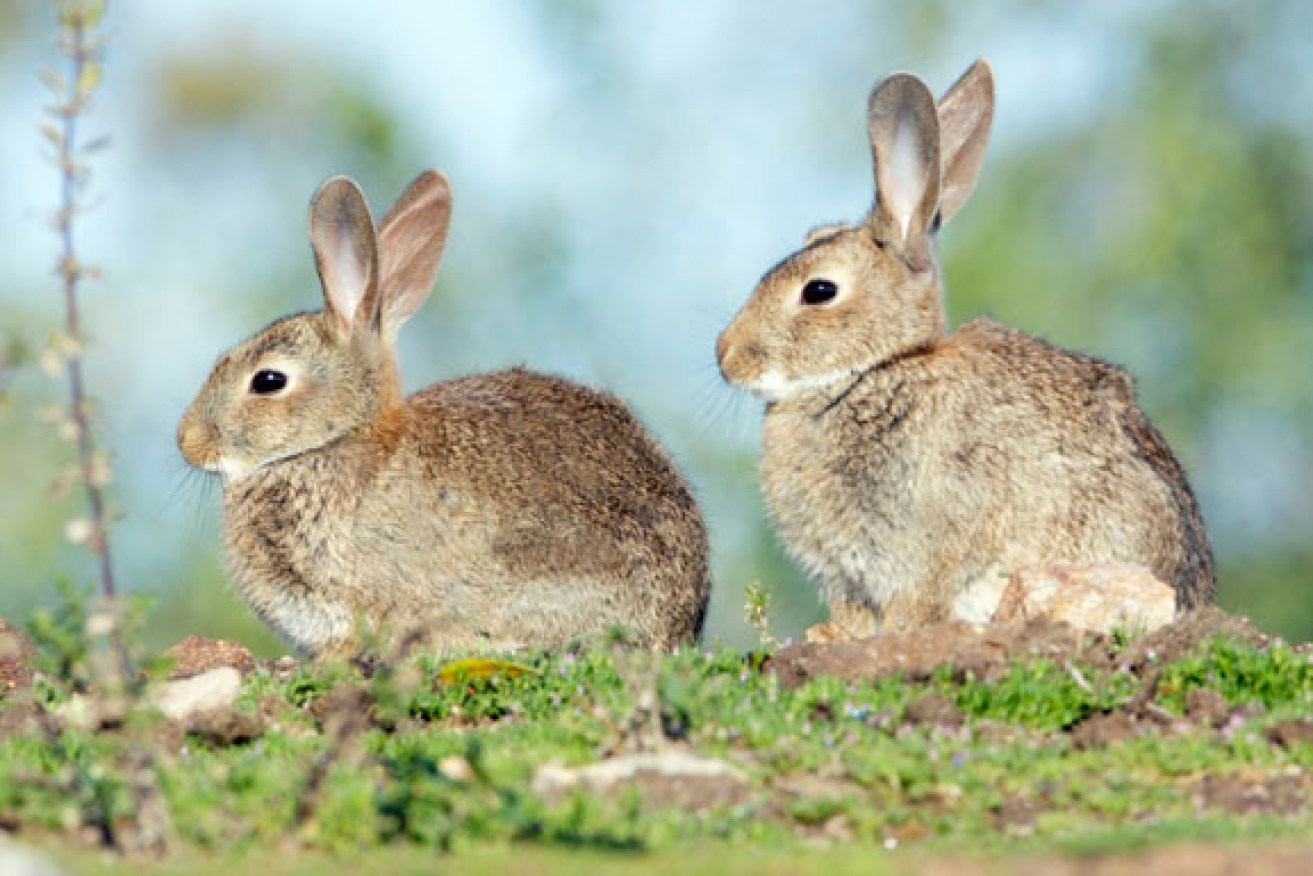Science finds new weapon for bunny battle

AAP
Scientists have identified a new weapon in the fight against a furry enemy that costs Australia $200 million a year in lost agricultural production.
A more infectious version of calicivirus – the “K5” strain – has been identified and, approvals pending, there are plans to release it into the nation’s wild rabbit population in 2016.
It’s the next major step in 60 years of using biological agents to reduce Australia’s rabbit population, starting with myxomatosis (1952) and then calicivirus (1995).
• ‘Cat Island’: more felines than humans
• Want to climb Mount Kilimanjaro? Here’s how
K5 addresses a problem recognised only recently with the strain of calicivirus in common use: it is less infectious for rabbits that already carry another, harmless virus called RCV-A1.
“There is a benign virus which came out with the first lot of rabbits,” said scientist Tarnya Cox, pointing to the nation’s first rabbits released by English settlers in the 1800s.
“We’ve been looking for a strain from overseas that could overcome … those protective effects of that benign virus.”
The benign virus is more common in rabbits in wetter regions, explaining why calicivirus has been less effective in those areas.
Dr Cox and other scientists at the Invasive Animals Cooperative Research Centre tested multiple strains before arriving at K5, from South Korea.
It has no problem infecting rabbits already carrying RCV-A1, so it should be more potent than the conventional calicivirus in the wild.
Tests confirmed pet rabbits vaccinated against calicivirus would still be protected against K5.
“People recognise that rabbits are a problem that need to be managed and it’s a matter of making sure that management is effective and humane, but that pet rabbits can be protected,” Dr Cox said.
An application for approval to introduce K5 is before the Australian Pesticides and Veterinary Medicines Authority.
Australia’s rabbit population peaked in the 1920s at an estimated 10 billion.
Bounties, trapping and shooting, poisoning, ploughing of warrens and targeted viruses have reduced their number to several hundred million.
They remain a major drag on the agricultural sector and a major cause of environmental damage.
“Bio control is the most effective but it is not a silver bullet,” said Michael Reid, National Rabbit Management Facilitator at the CRC.
He said control efforts were “integrated” for biggest impact, and the introduction of K5 would also involve landholders baiting or destroying warrens on their properties.
AUSTRALIA’S REBOUNDING RABBITS:
1859 – An English settler releases 24 rabbits on his Victorian property so he can hunt them.
1926 – Rabbit population hits 10 billion.
1920s to 1940s – Poisoning, bounty hunting and industrial scale export of rabbit skins and carcasses.
1950s – Rabbit population drops to 1.8 billion.
1952 – Myxomatosis introduced and kills more than 90 per cent of rabbits.
1960 to 1990s – Rabbits become resistant to myxomatosis and rebound, hitting 600 million.
1995 – Calicivirus is released, at first accidentally from a trial site.
2009 – Benign RCV-A1 virus is found to confer temporary protection against calicivirus.
2015 – New more infectious “K5” calicivirus strain identified.
Today – Application for 2016 release of K5, with rabbit numbers in the low hundreds of millions.
-AAP








